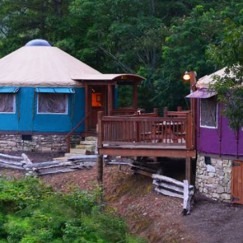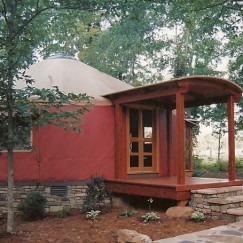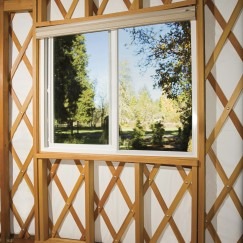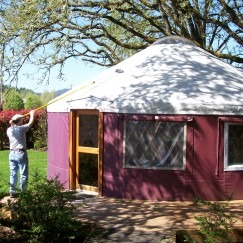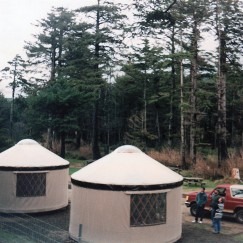Customer Spotlight: Insights from Veteran Glamping Expert Melissa Little
Those who venture into Nantahala Gorge, nestled in the hills near the western tip of North Carolina, will find a lot to love. There’s an abundance of outdoor activities, including kayaking in the Nantahala River. For hikers, there’s a major stretch of the famous Appalachian Trail.
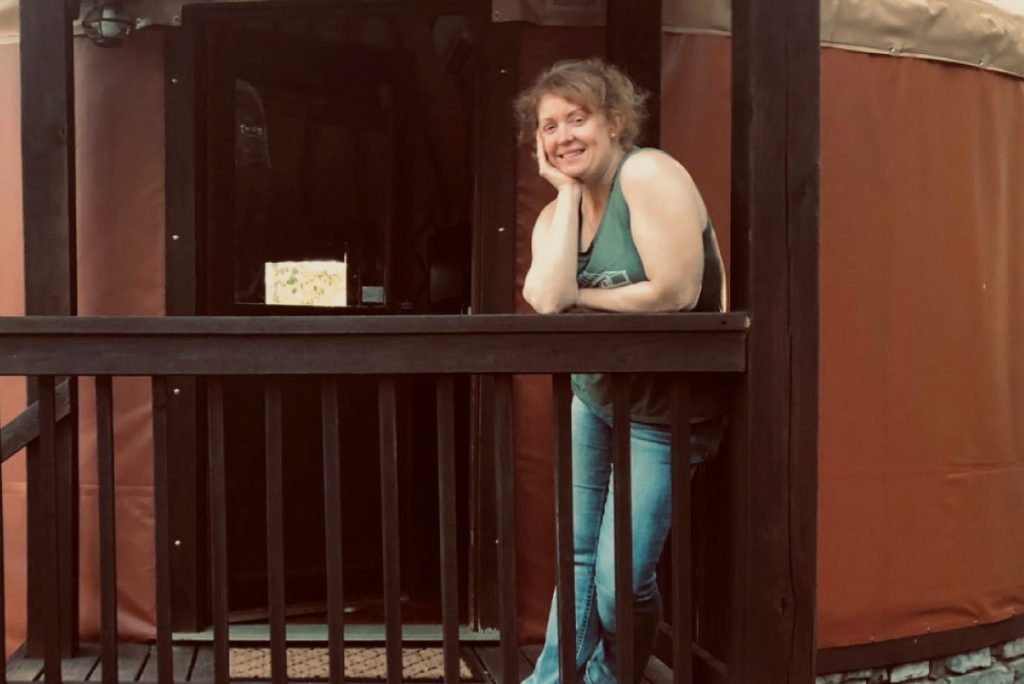
And over near Bryson City, there’s Sky Ridge Yurts, where Melissa Little has spent over a decade building a glamper’s paradise in close partnership with Pacific Yurts.
Our recent ROI analysis revealed strong financial performance for Sky Ridge Yurts. Now, we’re spotlighting the expert behind one of the most successful glamping businesses in Appalachia and getting her thoughts into some of the most popular yurt questions. What kind of traveler do yurts cater to? What’s behind the current glamping boom? What does the future hold, and what do businesses and adventurers need to know to get involved?
How Did Sky Ridge Yurts Get to Where They Are?
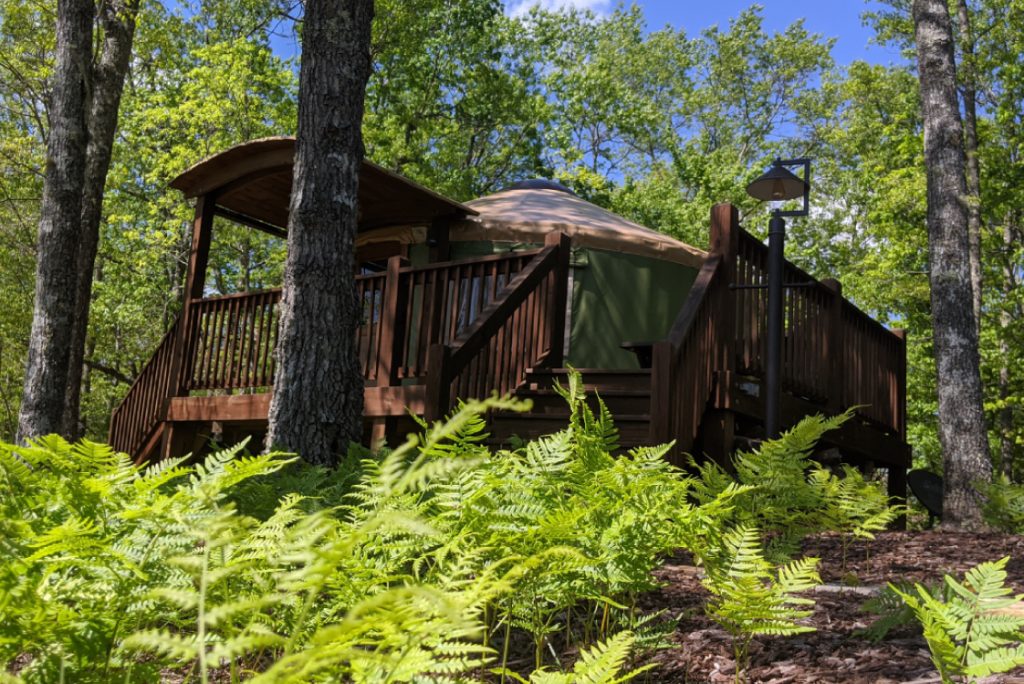
Melissa’s business got started after her husband passed away in 2010, leaving her in need of the means to support her family. With materials from Pacific Yurts and help from her late husband’s friends, she quickly erected three yurts and began renting them out.
They were an instant hit: “A healthy glamping business will have around 70% occupancy,” Melissa says. “We were at 95% or higher.” To meet the surging demand, Melissa worked with Pacific Yurts to expand her capacity. She now has seven yurts, with an eighth currently in the works.
She’s also running a consulting service helping people who are new to the yurt game along with installation. “With Pacific Yurts, the build itself is easy, and people really only need help if they’re building a lot of units and need a few extra hands,” Melissa says. “With other providers, the builds get a little more complicated, and they often need some guidance on the process.”
How Can Yurts Help Hospitality Businesses Broaden Their Appeal?
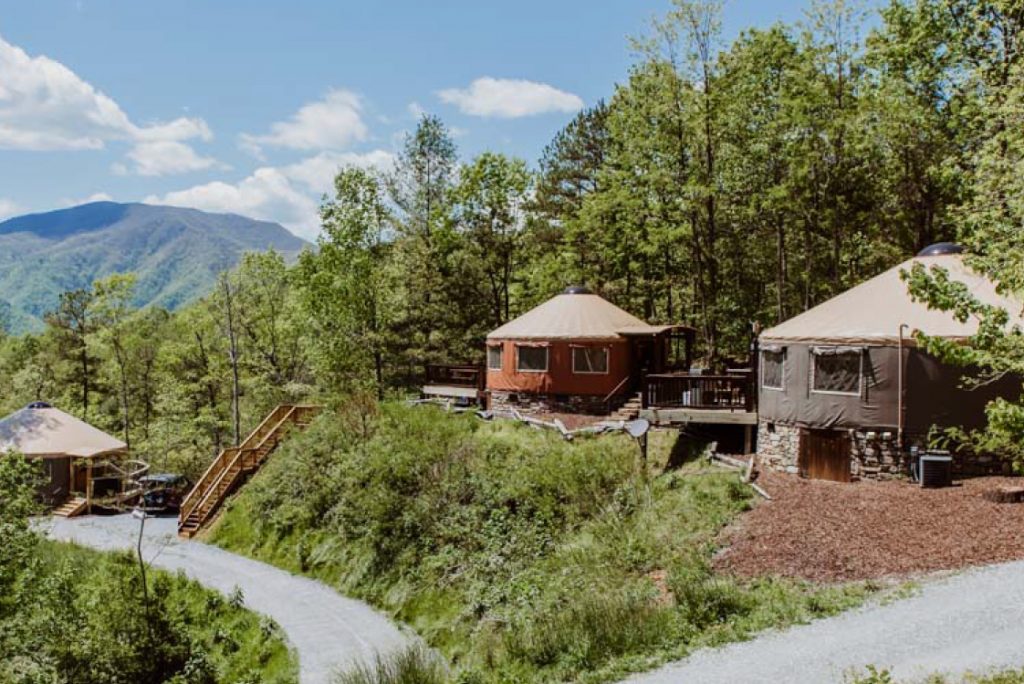
Sky Ridge Yurts has more accommodation options than their name suggests – in addition to their numerous yurts, they have a traditional cabin, with plans for additional lodgings on a second property they’ve acquired. And after several years of offering both options, Melissa has seen firsthand how yurts cater to a different type of audience with different priorities than more traditional accommodations can serve.
“We have a lot of folks that enjoy both our cabin and our yurts,” Melissa says. “But our yurts often specifically attract travelers who have a more adventurous spirit and who want something a little more rustic and remote but still comfortable – the exact kind of traveler that’s becoming more common in the glamping era. If we only had cabins, we wouldn’t get nearly as many of these folks. Sometimes they don’t even stay with us if our yurts are booked and only the cabin is available.”
What Would Melissa Tell Travelers and Businesses Interested in Yurts?
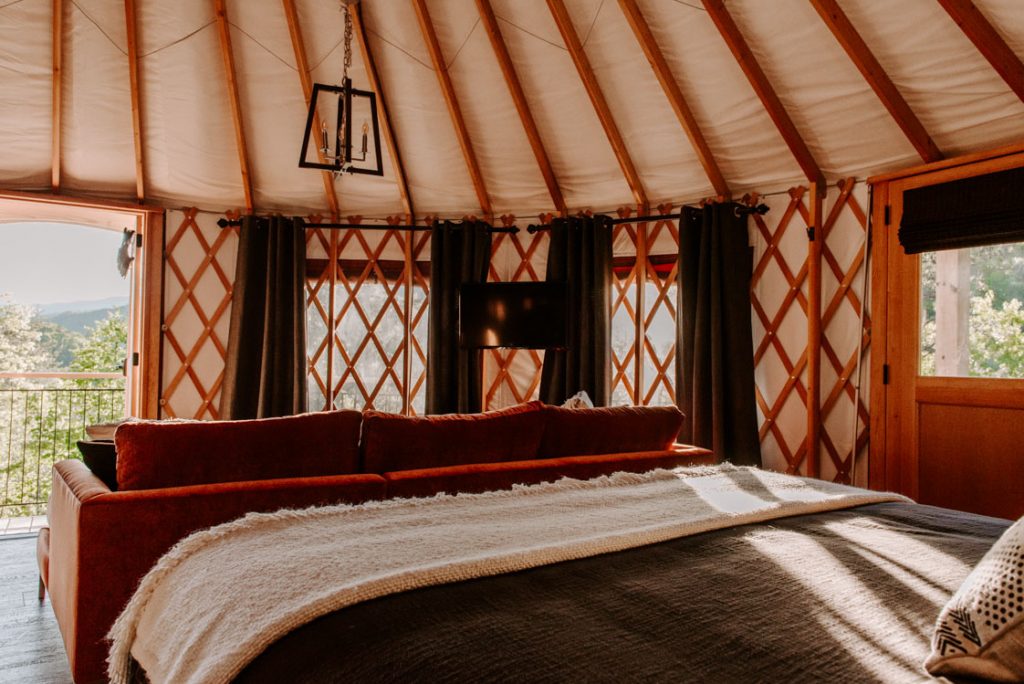
We asked Melissa to list the most important things to know about yurts, whether you’re thinking of staying in one, building one for your own use, or starting a glamping business. Melissa identified four key qualities:
Yurts Can Be Mobile
“Yurts have this beautiful aesthetic and spacious interior, and it all breaks down into a package of materials that’s so compact and easy to move. There have been times when I’ve transported a 20-foot yurt in the back of my Honda Element.”
Yurts Are Sustainable
“Yurts require far fewer materials to build than other structures. That doesn’t just make them less resource-intensive, it also means you don’t need a bunch of big, gas-guzzling trucks to haul the materials to your build site.”
Yurts Can Be Easy – If You Plan
“Because yurts are generally faster and less costly to build, some people make the mistake of thinking it’s a free-for-all. But there are still issues like local laws and landowner policies that could affect your plans. Do your homework as you move forward so you don’t run into trouble.”
Yurts Are Battle-Tested
“The glamping boom has also seen more safari tents and geodesic domes popping up, which often have structural issues, leaks, or poor insulation. Those problems don’t exist with our yurts. Our oldest yurts date back 14 years and we’ve never had one maintenance issue.”
How Does Melissa Explain the Current Glamping Boom?
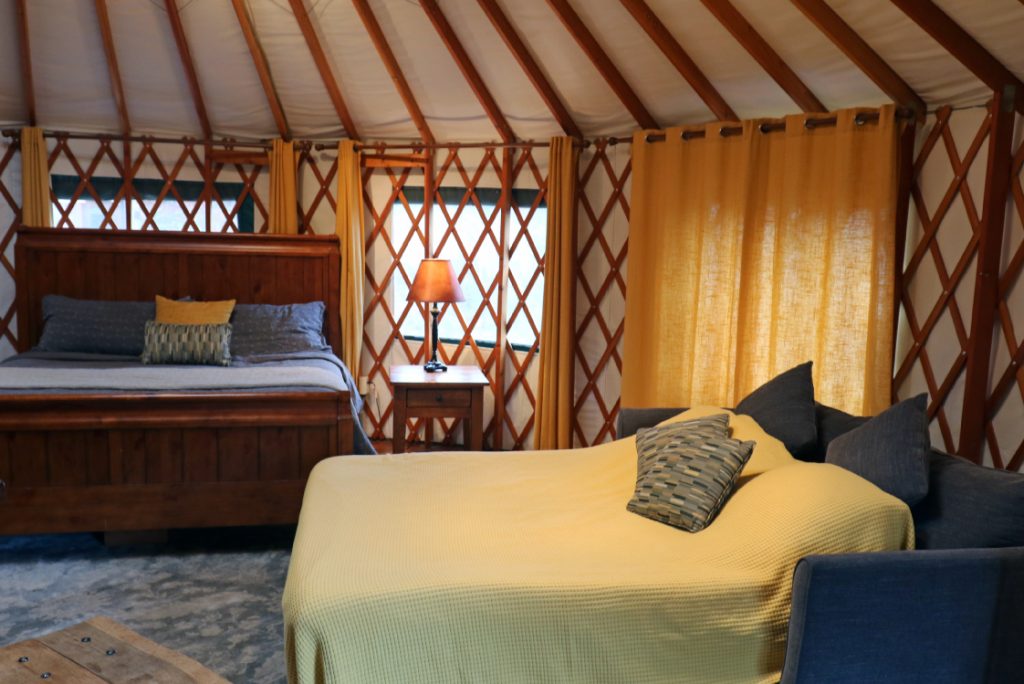
There’s little denying the glamping boom among American travelers. One projection puts the cumulative annual growth rate of glamping at 8.7% between 2024 and 2030. The term was even added to the Oxford English Dictionary in 2016.
But how did the glamping boom come about, and where is it headed?
“Not long ago, if you wanted an outdoorsy experience, your options were a hotel or a cabin, or, on the other side, a tent or RV. There wasn’t really anything in between,” Melissa says. “But tastes are changing, and the pandemic accelerated that as people wanted to travel in comfort while still social distancing. That interest hasn’t gone away, and it has made glamping, and yurts specifically, much more popular.”
As for what happens now: “The glamping boom has changed the way investors and banks think about yurts,” Melissa says. “There was a time when it was hard to get loans or financing for yurt construction because it felt new and unproven. Now that glamping has mainstreamed alternative kinds of lodgings, it’s so much easier to attract investors and to work with insurance companies and governments. I think that will add even more energy to the glamping boom – I don’t see it slowing down anytime soon.”
Learn and Explore
Thinking of building a yurt for your business? Take a test drive with the 3D yurt builder tool and submit a quote.
